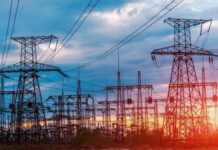Southeast Asia’s growing economy and population will result in a large increase in energy demand by 2050. Along with this rise, the amount of CO2 emissions related to energy would double. IRENA estimates that the region can meet their growing energy demand with renewables and cut 75 per cent of their energy-related CO2 emissions by 2050, half of the emissions compared to today.
Following the Paris Agreement, the Association of Southeast Asian Nations (ASEAN) member states have revised their power development plans to include ambitious commitments to power sector decarbonisation. The region has agreed collectively to increase the share of RE in installed power capacity to 35 per cent by 2025. At the COP26 in 2021, most ASEAN member states reaffirmed this commitment, and currently, nine out of 10 governments have pledged to achieve net-zero targets by 2050.
To foster discussion on the renewable energy landscape in ASEAN, identify major obstacles, and explore how policies and financial solutions can help attract more investment for achieving renewables goals, IRENA organised an event on 16 January at the World Future Energy Summit (WFES) in Abu Dhabi.
“ASEAN has a unique opportunity to develop a sustainable energy system based on renewables and end-use electrification that can offer socioeconomic benefits while meeting the Paris Agreement goals,” said Gurbuz Gonul, Director, Country Engagement and Partnership, IRENA. However, “an increased momentum in renewable energy investments is essential to be able to achieve this,” he added. Speaking about the main financial barriers to scaling-up renewable energy in Southeast Asia, Landon Derentz, Senior Director, Atlantic Council Global Energy Center, said that rate-of-returns uncertainty and lack of regulatory framework can impede the deployment of renewables in the region. “To ensure a steady flow of capital, regulators must develop a transmission and distribution infrastructure that supports both national as well as a regional approach,” he added.
That view was echoed by Jonathan Goh, Director, External Relations at the Energy Market Authority of Singapore, who called for increased public-private engagement for renewable energy development. He also pointed out that the fast-growing demand for cooling is a major energy challenge in Southeast Asia where populations and temperatures are rising quickly.
Sharing his country’s ambitious target of increasing the share of renewables to 23 per cent of the national energy mix by 2025, Dr. Surya Darma, Chairman, Indonesian Centre for Renewable Energy, said, “The realisation of this goal will be challenging, and we will have to place energy security and affordability at the top of the agenda.”





































